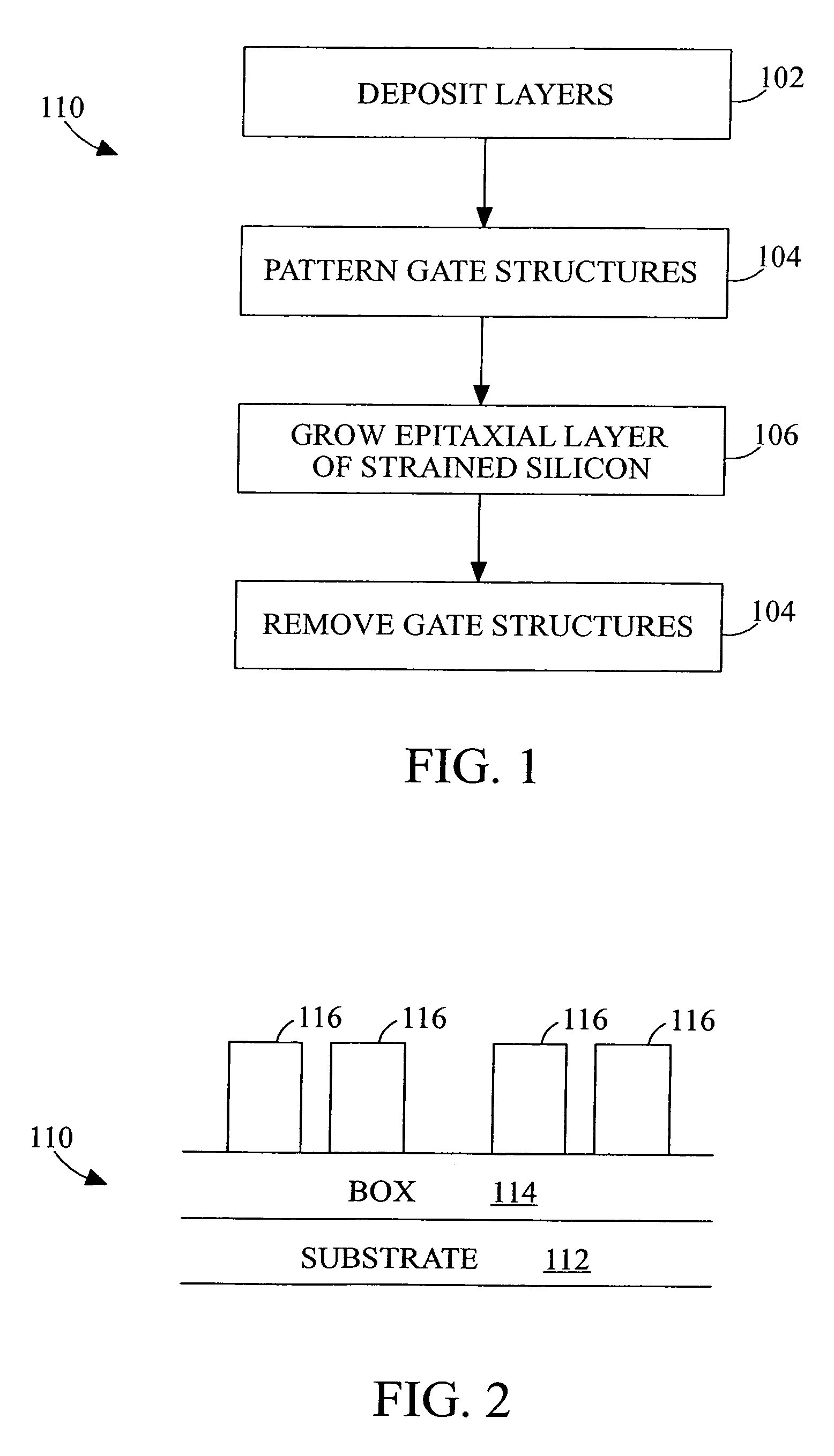Formation of finFET using a sidewall epitaxial layer
a technology of sidewall epitaxial layer and fin fet, which is applied in the direction of electrical equipment, semiconductor devices, medical science, etc., can solve the problems of degrading the ability of the gate of the same to control whether, becoming increasingly difficult, and suffering from several problems in the conventional mos
- Summary
- Abstract
- Description
- Claims
- Application Information
AI Technical Summary
Benefits of technology
Problems solved by technology
Method used
Image
Examples
Embodiment Construction
[0022]With reference to FIG. 1, an advantageous process 100 forms strained silicon finFET structures using a sidewall epitaxial layer. The strain in these finFET structures can be used to enhance electron mobility. While process 100 is described by way of example, additional, fewer, or different operations may be performed. Process 100 is not limited to the operations, materials, or techniques described herein.
[0023]In an operation 102, various layers are formed over a substrate. For example, a buried oxide layer is formed above a substrate and a silicon germanium layer (SiGe) layer is formed above the buried oxide layer. The silicon germanium (SiGe) layer can be deposited above the buried oxide layer using any of a variety of deposition techniques. A cap layer can be deposited above the silicon germanium layer.
[0024]In an operation 104, gate structures are patterned from the silicon germanium layer and cap layer provided in operation 102. Structures can be patterned from the silico...
PUM
 Login to View More
Login to View More Abstract
Description
Claims
Application Information
 Login to View More
Login to View More - R&D
- Intellectual Property
- Life Sciences
- Materials
- Tech Scout
- Unparalleled Data Quality
- Higher Quality Content
- 60% Fewer Hallucinations
Browse by: Latest US Patents, China's latest patents, Technical Efficacy Thesaurus, Application Domain, Technology Topic, Popular Technical Reports.
© 2025 PatSnap. All rights reserved.Legal|Privacy policy|Modern Slavery Act Transparency Statement|Sitemap|About US| Contact US: help@patsnap.com



